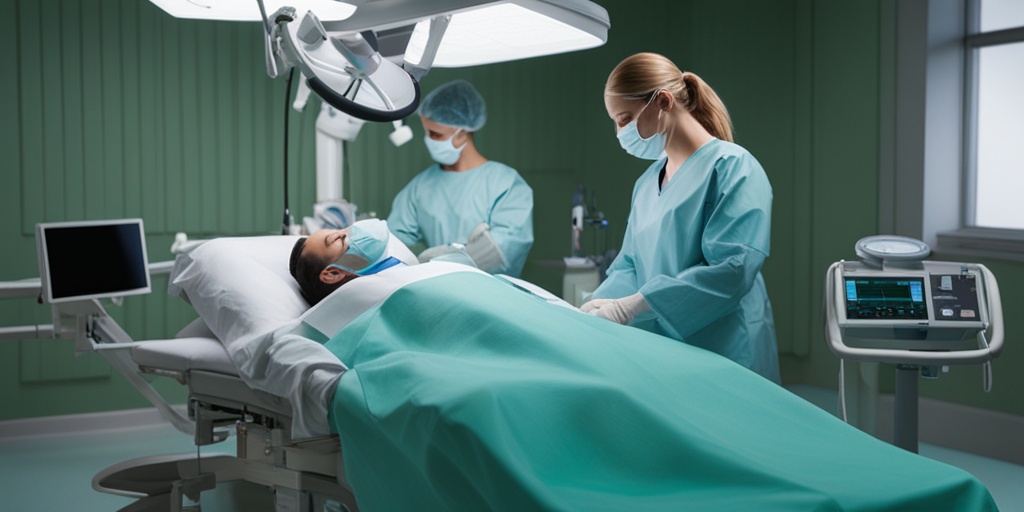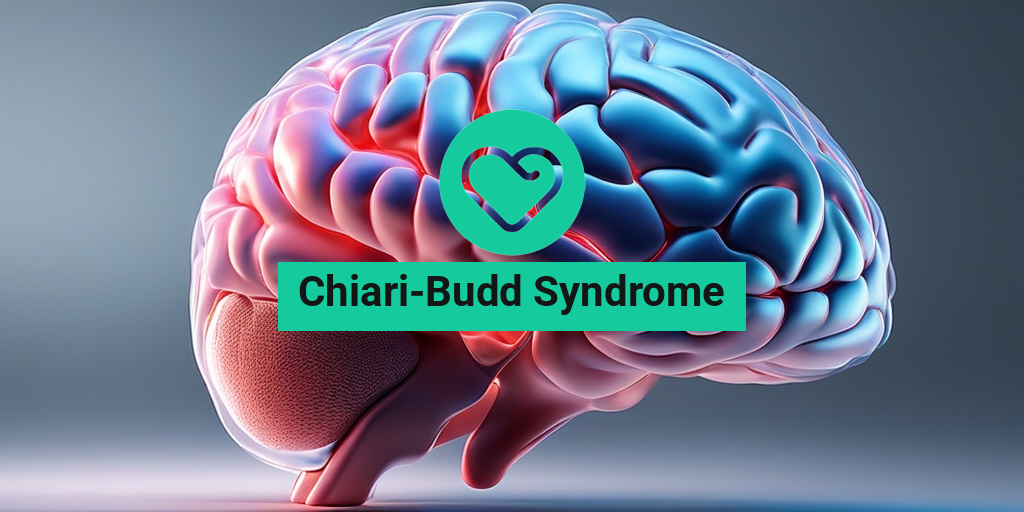What Is Chiari-Budd Syndrome?
Chiari-Budd Syndrome, also known as Budd-Chiari Syndrome, is a rare and potentially life-threatening medical condition that affects the liver. It occurs when the hepatic veins, which carry blood from the liver to the heart, become blocked or narrowed, leading to liver damage and potentially even liver failure.
Causes of Chiari-Budd Syndrome
The exact cause of Chiari-Budd Syndrome is often unknown, but it can be associated with various underlying conditions, such as:
- Blood clots or thrombosis
- Tumors, such as liver cancer or lymphoma
- Infections, like aspergillosis or candidiasis
- Inflammatory bowel disease, like Crohn’s disease or ulcerative colitis
- Parasitic infections, such as schistosomiasis
- Genetic disorders, like factor V Leiden or antithrombin deficiency
In some cases, Chiari-Budd Syndrome can be caused by a combination of these factors or other underlying conditions.
How Is Chiari-Budd Syndrome Diagnosed?
Diagnosing Chiari-Budd Syndrome typically involves a combination of medical imaging tests, such as:
- Ultrasound
- Computed Tomography (CT) scan
- Magnetic Resonance Imaging (MRI)
- Angiography
These tests help doctors visualize the liver and its blood vessels to identify any blockages or narrowing. In some cases, a liver biopsy may be necessary to confirm the diagnosis.
Chiari-Budd Syndrome Symptoms
The symptoms of Chiari-Budd Syndrome can vary depending on the severity of the condition and the individual affected. Common symptoms include:
- Abdominal pain, which can be severe and persistent
- Ascites, or fluid accumulation in the abdominal cavity
- Fatigue, which can be debilitating
- Nausea and vomiting, which can lead to dehydration
- Loss of appetite, which can result in weight loss
- Jaundice, or yellowing of the skin and eyes
- Bleeding disorders, such as easy bruising or bleeding
In severe cases, Chiari-Budd Syndrome can lead to liver failure, which can be life-threatening if left untreated. If you or a loved one is experiencing any of these symptoms, it’s essential to seek medical attention promptly.
Remember, accurate diagnosis and timely treatment are crucial in managing Chiari-Budd Syndrome. If you have any concerns or questions, consider consulting with a healthcare professional or visiting a trusted online resource like Yesil Health AI (yesilhealth.com) for evidence-based health answers.
🏥💊

Causes of Chiari-Budd Syndrome
Chiari-Budd Syndrome, also known as Budd-Chiari Syndrome, is a rare and complex liver disorder that occurs when the hepatic veins, which carry blood from the liver to the heart, become blocked or narrowed. While the exact causes of Chiari-Budd Syndrome are not fully understood, research has identified several underlying factors that contribute to its development.
Genetic Mutations
Some cases of Chiari-Budd Syndrome have been linked to genetic mutations, particularly those affecting the genes responsible for blood clotting and blood vessel development. For instance, mutations in the JAK2 gene, which codes for a protein involved in blood cell production, have been identified in some patients with the condition.
Blood Clotting Disorders
Blood clotting disorders, such as antiphospholipid syndrome, can increase the risk of developing Chiari-Budd Syndrome. These disorders can cause blood clots to form in the hepatic veins, leading to blockages and damage to the liver.
Infections and Inflammation
Infections, such as hepatitis, and inflammatory conditions, like autoimmune hepatitis, can cause scarring and damage to the liver, leading to the development of Chiari-Budd Syndrome.
Tumors and Cysts
In rare cases, tumors or cysts in the liver or hepatic veins can compress or block the blood vessels, leading to Chiari-Budd Syndrome.
Risk Factors for Chiari-Budd Syndrome
While anyone can develop Chiari-Budd Syndrome, certain individuals are more likely to be affected due to various risk factors.
Age and Gender
Chiari-Budd Syndrome typically affects individuals between the ages of 30 and 50, with women being more commonly affected than men.
Family History
Having a family history of Chiari-Budd Syndrome or other liver disorders can increase an individual’s risk of developing the condition.
Underlying Medical Conditions
Certain medical conditions, such as polycythemia vera, paroxysmal nocturnal hemoglobinuria, and inflammatory bowel disease, can increase the risk of developing Chiari-Budd Syndrome.
Pregnancy and Hormonal Changes
Hormonal changes during pregnancy can increase the risk of blood clotting and hepatic vein thrombosis, leading to Chiari-Budd Syndrome.
It’s essential to note that having one or more of these risk factors does not guarantee the development of Chiari-Budd Syndrome. If you’re concerned about your risk or have been diagnosed with the condition, consult with a healthcare professional for personalized guidance and treatment. 💊

Diagnosing Chiari-Budd Syndrome
Receiving a diagnosis of Chiari-Budd Syndrome can be a life-changing event. This rare and complex condition affects the liver and its blood vessels, leading to a range of symptoms that can be debilitating and even life-threatening. But how do doctors diagnose Chiari-Budd Syndrome, and what tests are involved?
Initial Symptoms and Medical History
The diagnostic process typically begins with a thorough medical history and physical examination. Your doctor will ask about your symptoms, such as abdominal pain, fatigue, and jaundice, as well as any previous medical conditions or family history of liver disease. They will also perform a physical exam to check for signs of liver damage, such as an enlarged liver or spleen.
Imaging Tests
Imaging tests are crucial in diagnosing Chiari-Budd Syndrome. These may include:
- Ultrasound: This non-invasive test uses high-frequency sound waves to produce images of the liver and its blood vessels.
- CT scan: A computed tomography (CT) scan uses X-rays and computer technology to produce detailed cross-sectional images of the liver and surrounding tissues.
- MRI: Magnetic resonance imaging (MRI) uses a strong magnetic field and radio waves to produce detailed images of the liver and its blood vessels.
- Angiography: This test involves injecting a contrast dye into the blood vessels to highlight any blockages or abnormalities.
These imaging tests can help identify obstructions or blockages in the hepatic veins, which is a hallmark of Chiari-Budd Syndrome.
Lab Tests
In addition to imaging tests, your doctor may order lab tests to check for signs of liver damage and dysfunction. These may include:
- Liver function tests (LFTs): These tests measure the levels of certain enzymes and proteins in the blood to assess liver function.
- Complete blood count (CBC): This test measures the different components of your blood, including red and white blood cells and platelets.
- Coagulation studies: These tests measure the blood’s ability to clot and may be abnormal in people with Chiari-Budd Syndrome.
By combining the results of these tests, your doctor can make an accurate diagnosis of Chiari-Budd Syndrome and develop an effective treatment plan.
Treatment Options for Chiari-Budd Syndrome
Treatment for Chiari-Budd Syndrome typically involves a combination of medical therapies and surgical interventions. The goal of treatment is to relieve symptoms, improve liver function, and prevent complications.
Medical Therapies
Medical therapies may include:
- Anticoagulation therapy: Medications such as warfarin or heparin may be prescribed to prevent blood clots from forming in the hepatic veins.
- Diuretics: These medications can help reduce fluid buildup in the body and alleviate symptoms such as swelling and abdominal pain.
- Pain management: Medications such as acetaminophen or opioids may be prescribed to manage abdominal pain and discomfort.
Surgical Interventions
Surgical interventions may be necessary to relieve blockages in the hepatic veins or repair damaged liver tissue. These may include:
- Angioplasty: A minimally invasive procedure in which a balloon is inserted through a catheter to widen the blocked hepatic vein.
- Stenting: A small mesh tube (stent) may be inserted to keep the hepatic vein open and improve blood flow.
- Liver transplantation: In severe cases, a liver transplant may be necessary to replace the damaged liver with a healthy one.
It’s essential to work closely with your healthcare team to develop a personalized treatment plan that addresses your unique needs and symptoms. With the right treatment, it’s possible to manage Chiari-Budd Syndrome and improve your quality of life. 💊

Medications for Chiari-Budd Syndrome
While there is no cure for Chiari-Budd Syndrome, medications can help alleviate symptoms and manage the condition. The primary goal of medication therapy is to reduce blood clotting, improve blood flow, and alleviate symptoms such as pain, fatigue, and digestive issues. Let’s explore some of the common medications prescribed for Chiari-Budd Syndrome:
Anticoagulants
Anticoagulants, also known as blood thinners, are prescribed to prevent blood clots from forming in the hepatic veins. These medications work by reducing the production of vitamin K-dependent clotting factors in the liver. Common anticoagulants used to treat Chiari-Budd Syndrome include:
- Warfarin: A commonly prescribed anticoagulant that requires regular blood tests to monitor its effects.
- Low-molecular-weight heparin: A type of heparin that is administered through injection and has a lower risk of bleeding complications.
Pain Management
Pain is a common symptom of Chiari-Budd Syndrome, and medications can help alleviate discomfort. Pain management medications may include:
- Opioids: Strong painkillers that should be used with caution due to the risk of addiction and dependence.
- Non-steroidal anti-inflammatory drugs (NSAIDs): Medications like ibuprofen or naproxen that can help reduce pain and inflammation.
Diuretics
Diuretics are medications that help remove excess fluid from the body by increasing urine production. They can help alleviate symptoms such as ascites (fluid accumulation in the abdomen) and swelling in the legs and feet.
Other Medications
In addition to the above medications, other drugs may be prescribed to manage specific symptoms or complications of Chiari-Budd Syndrome. These may include:
- Beta blockers: Medications that can help reduce portal hypertension and prevent bleeding in the esophagus and stomach.
- Laxatives: Medications that can help manage constipation, a common symptom of Chiari-Budd Syndrome.
It’s essential to work closely with your healthcare provider to determine the best medication regimen for your specific needs. Remember to always follow the prescribed dosage and schedule, and report any side effects or concerns to your doctor. 💊
Lifestyle Changes for Chiari-Budd Syndrome Management
In addition to medication therapy, making lifestyle changes can help manage Chiari-Budd Syndrome and improve overall health. Here are some changes you can make to complement your treatment plan:
Dietary Changes
A healthy diet can help alleviate symptoms and improve digestion. Consider the following dietary changes:
- Increase fiber intake: A high-fiber diet can help manage constipation and promote regular bowel movements.
- Avoid salty foods: Reducing sodium intake can help minimize fluid retention and swelling.
- Stay hydrated: Drinking plenty of water can help flush out toxins and improve digestion. 💧
Exercise and Physical Activity
Regular exercise can help improve circulation, reduce fatigue, and promote overall health. However, it’s essential to consult with your healthcare provider before starting any new exercise program, especially if you have any underlying medical conditions.
Stress Management
Stress can exacerbate symptoms of Chiari-Budd Syndrome. Engage in stress-reducing activities such as:
- Meditation: Practice mindfulness meditation to reduce stress and promote relaxation. 🙏
- Yoga: Gentle yoga exercises can help improve flexibility and reduce stress. 🧘♀️
- Deep breathing exercises: Practice deep breathing techniques to reduce anxiety and promote relaxation. 👅
By incorporating these lifestyle changes into your daily routine, you can better manage your Chiari-Budd Syndrome and improve your overall quality of life. Remember to always consult with your healthcare provider before making any significant changes to your treatment plan. 💕

Frequently Asked Questions about Chiari-Budd Syndrome
What is Chiari-Budd Syndrome?
Chiari-Budd Syndrome is a rare and life-threatening liver disorder that occurs when the hepatic veins that carry blood from the liver to the heart are blocked or narrowed.
What are the symptoms of Chiari-Budd Syndrome?
The symptoms of Chiari-Budd Syndrome can vary from person to person, but common symptoms include:
- Abdominal pain and tenderness
- Fatigue
- Nausea and vomiting
- Loss of appetite
- Weight loss
- Yellowing of the skin and eyes (jaundice)
- Dark urine and pale stools
What causes Chiari-Budd Syndrome?
The exact cause of Chiari-Budd Syndrome is not fully understood, but it is thought to be related to:
- Blood clots in the hepatic veins
- Inflammation of the hepatic veins
- Tumors that compress the hepatic veins
- Genetic mutations
How is Chiari-Budd Syndrome diagnosed?
Diagnosis of Chiari-Budd Syndrome typically involves a combination of:
- Medical history and physical examination
- Imaging tests such as ultrasound, CT, and MRI scans
- Lab tests to check liver function and blood clotting
- Angiography to visualize the hepatic veins
What is the treatment for Chiari-Budd Syndrome?
Treatment for Chiari-Budd Syndrome usually involves a combination of:
- Medications to prevent blood clots and reduce inflammation
- Thrombolytic therapy to dissolve blood clots
- Angioplasty to widen narrowed hepatic veins
- Liver transplantation in severe cases
What is the life expectancy of someone with Chiari-Budd Syndrome?
The life expectancy of someone with Chiari-Budd Syndrome varies depending on the severity of the condition and the effectiveness of treatment. With proper treatment, some people can live for many years with the condition, while others may require a liver transplant to survive.
Is Chiari-Budd Syndrome inherited?
Chiari-Budd Syndrome is not typically inherited, but some genetic mutations can increase the risk of developing the condition.
Can Chiari-Budd Syndrome be prevented?
There is no sure way to prevent Chiari-Budd Syndrome, but maintaining a healthy lifestyle, avoiding blood clots, and managing underlying medical conditions can reduce the risk of developing the condition.
Where can I find more information about Chiari-Budd Syndrome?
More information about Chiari-Budd Syndrome can be found through:
- National Institute of Diabetes and Digestive and Kidney Diseases (NIDDK)
- American Liver Foundation (ALF)
- Mayo Clinic
- Other reputable health organizations and medical websites
🤝 Remember, it’s essential to consult with a healthcare professional for personalized information and advice about Chiari-Budd Syndrome.




